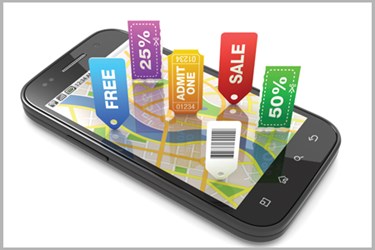GIS In Retail: The New Business Intelligence To Drive Your Sales
By Aspectum

Today, we are at a point where virtually everything can be bought and brought to your doorstep pretty quick. It’s a pinnacle of availability, however, not all the fronts are covered in terms of process efficiency and analytics.
It is no secret that leading companies base their decision making on data which is now also abundant. Making sense of this information is the next challenge that each company will have to manage in the nearest future.
GIS Comes To The Rescue
Data science can really do wonders for your business but not everyone is specialized to process this asset. The information is often so complex that many experts in your team would need to spend an unreasonable amount of time and effort to process it.
This is why data experts provide the visual means that are so familiar to us today. These are graphs, pie charts, histograms and others. Today, with GIS, the insights are also laid on top of different regions of the world to create data-rich maps that are both highly nuanced and informative for everyone. The key observations are much more distinct when shown through GIS analytics than they ever would be.
Strategic Planning And Business Intelligence
Over the past few years, many brick-and-mortar retailers have been actively expanding their networks. New stores were opening without sufficient background check for things like local age/gender ratios, income levels or shoppers’ movement patterns. The results are losses and bankruptcy for the unfortunate. Still, with multiple success cases amid this chaos, it’s only true that all crucial business decisions have to be well informed. With that, GIS-based insights can help you.
Here is a pretty straightforward example as far as data maps can go. It showcases the locations of Walmart stores in the US, layered on top of national income levels per region. It also highlights the especially high- and low-income locations in red and blue. With this visualization, you can see how data experts can make important key points visible and usable for everyone.
Not so long ago, this was possible only via reports from third-party experts. They were more expensive and took much more time to create. The latter meant that valuable information was buried in a huge thread of a text. Also, spatial analytics were not fully integrated into other management software. This meant that layering the sales data over the region was a slow process as well. All of the would bottleneck the decision making.
The Beacon Of Customer Experience
GIS is not just about business usage; it also can empower your clients. Even putting your brick-and-mortar location on Google Maps is super helpful to get new clients. By knowing where you are, customers navigate to your store with ease. This is saving the time that they value.
It is important for the quality of delivery services too. For instance, by mapping the statistics on previous purchases in different parts of the city, you can make rough estimates for the future, prepare for it and ship things more efficiently.
The Roadmap To Success
Coming to terms with change has got all the more important for businesses of any size. Adopting innovation had proven essential for companies to gain a competitive advantage. As information becomes more available, it’s all about making the complex and multifaceted data easy for everyone.
For many B2C industries, map analytics are already a game changer and retail is seeing benefits as well. When everything is available to everyone it’s the access to information that makes a real difference. Whether it’s business strategy or client-centered services, a simple marker or gradient layer placed on the map can make the difference between a hit or miss.
So before finalizing that next decision, make sure that your facts are in order. With visualized data - now you can.
